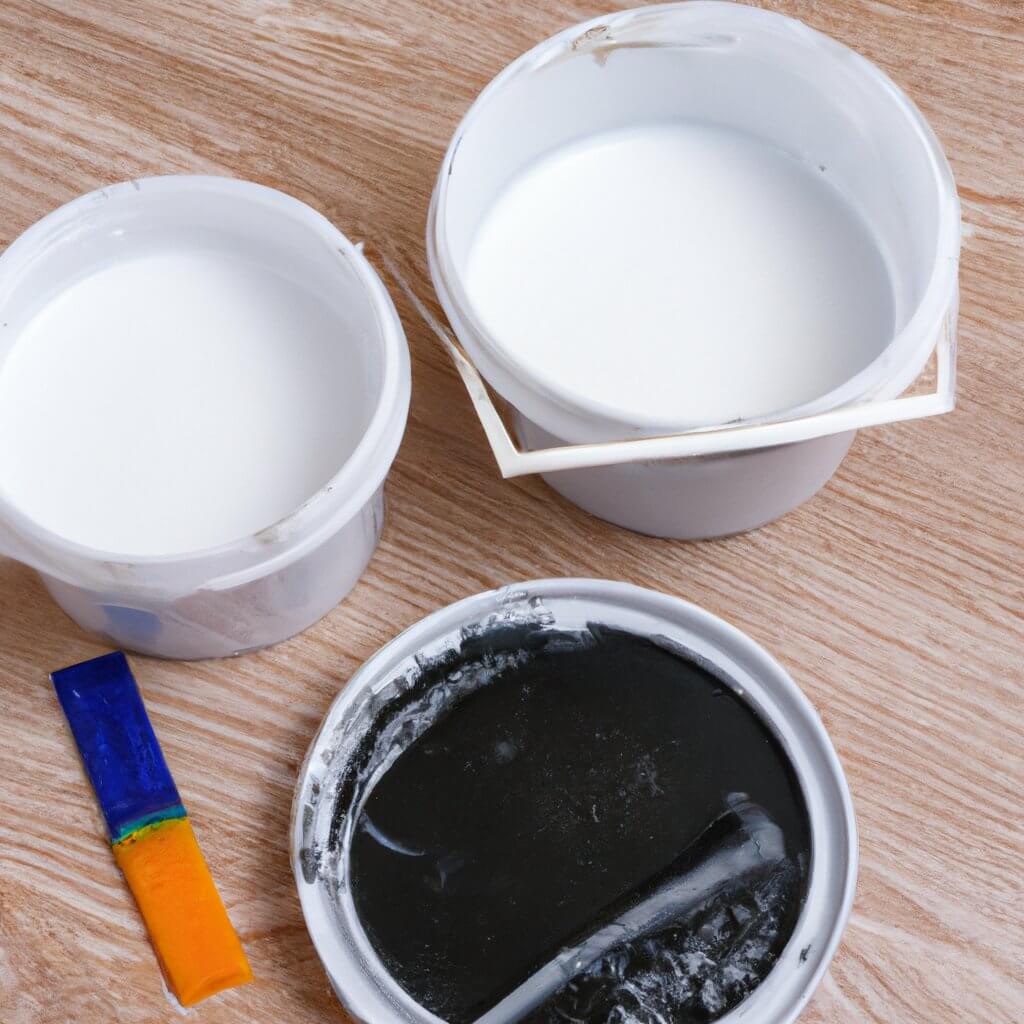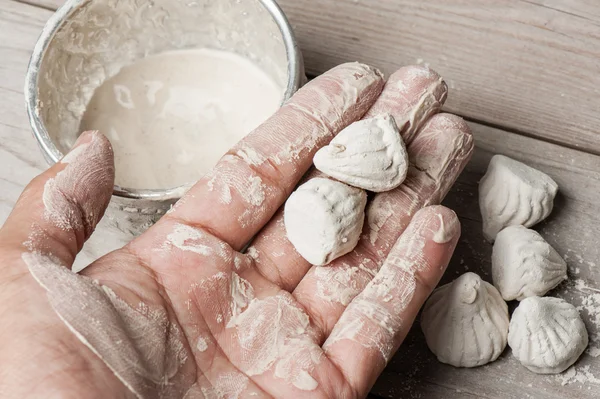- Home
- How to Dispose of Paint Water
- How to Harden Oil-based Paint for Disposal
how to harden oil-based paint for disposal? 8 Key Tips to Get it Right

Are you planning to use oil-based paint in your home or business? While this type of paint is versatile and widely used, it's important to remember that it must be properly hardened for disposal.
Depending on where you live, you may even need to comply with local regulations concerning oil-based paint when disposing of it. To ensure you meet the necessary criteria, this blog post will guide you through hardening oil-based paint for disposal.
One option involves adding an absorbent material like sawdust or kitty litter to the paint in order to suck up the liquid. If you need a faster approach, however, you can also utilize a paint hardener—a chemical compound that binds with the paint and transforms it into a solid form. Whichever route you choose, you'll be able to securely discard your oil-based paint in accordance with current standards.
1. Allow the paint to dry completely
It's essential to ensure that oil-based paints are fully hardened and dried out before discarding. This process can take anywhere from a couple of days up to a week, depending on the environment and the quantity of paint in the container; wetness may still be present even after several days of leaving it open.
To make certain that your paint is totally dry, give it a once over for wetness when it's been left exposed for a few days – if any wetness remains, you'll need to leave it open for an extended period.
2. Add paint hardener to the can
To ensure proper disposal and keep your home free of hazardous waste, utilizing a paint hardener on oil-based paints is an absolute must.
This specialized product quickly and effectively solidifies the paint and eliminates the risks associated with storing hazardous liquids. Without a paint hardener, hazardous waste becomes a risk to both you and the environment. Investing in this simple, yet incredibly essential tool ensures that oil-based paint will be properly disposed of without risk or worry.
Don't let unsafe disposal practices linger around your home - add a paint hardener for safety, convenience, and peace of mind.
3. Stir the paint and hardener together
When it comes to mixing your paint and hardener, the right ratio is critical for achieving a finished product that has optimal hardness.
Failing to adhere to the manufacturer's instructions can spell disaster for your painting — that's why it's essential to consult them first. After you have all the necessary supplies assembled and donned your protective gear, put the paint and hardener in a plastic bucket and use a wide paint stirrer to mix them well.
It's not enough just to combine the two ingredients; only with thorough stirring will you achieve the perfect blend necessary for your paint to be able to dry and achieve the desired hardness. Don't settle for anything less than perfection: follow these steps and guarantee yourself an excellent finished product.
4. Allow the paint to sit for 8 to 10 hours
If you are looking to dispose of oil-based paint, it is critical to wait the appropriate amount of time for it to harden. Depending on the temperature and humidity in your area, this could be anywhere from 8-24 hours – so make sure to check back frequently!
By waiting for the paint to completely harden, you will be doing your part in safeguarding our environment from unknown consequences caused by premature disposal. Waiting just a few extra hours can make a lasting impact. Don't skip the important step in making the world around us greener – let's all take a moment and be sure that the paint has hardened completely before disposing of it responsibly.
5. Stir the paint again
Are you getting ready to dispose of your oil-based paint can? Before you do, it’s important that you harden it first – and stirring the paint is a critical part of this process.
Don’t underestimate its importance or skip over this important step! Stirring the paint helps ensure that the paint has been adequately hardened and will not pose any risks when disposed of. So if you want to be sure that you are disposing of your can safely, take a few extra minutes to give it a good stir. You'll be glad you did!
6. Apply a thin layer of paint to a piece of cardboard
Applying a thin layer of paint to a piece of cardboard is essential in order to safely and properly dispose of oil-based paint. With the right tools and materials, this process can be done quickly and easily.
Gather up a piece of cardboard, a paintbrush, and oil-based paint for your project. Pour a small amount of the paint onto the cardboard and spread it with the brush until the surface is covered in an even layer - but don't use too much!
When you're finished, give the paint time to dry before disposing of it. Put forth the effort now to ensure that your used oil-based paints are disposed of properly, so you can stay safe and avoid costly consequences.
7. Allow the paint to dry completely
When it comes to disposing of oil-based paints, the key to success is allowing them to dry completely before tossing them in the trash. To do this effectively, however, you must take into consideration both the weather conditions and ensure the paint remains well-ventilated. If the temperature is warmer than usual, it may take less time for the paint to dry.
But if it’s cooler, then you will need to give it extra time so that every last drop of the moisture evaporates from the package. Additionally, even if temperatures are suitable, poor ventilation can act as a deterrent for full drying. Therefore, opening windows or using fans are essential components for successful drying.
By following these guidelines and utilizing the power of patience, you can be sure the paint cans will be properly disposed of, as long as total evaporation has been achieved.
8. Dispose of the paint and cardboard in accordance with local regulations
With oil-based paint and cardboard both naturally hardening over time, it is important to remember the extra precautions needed when disposing of these materials.
As a hazardous waste, the local regulations regarding the disposal of such materials must be strictly adhered to in order to protect our environment. Not abiding by such regulations could lead to serious consequences, not just on a personal level but also on a much larger scale.
So while it may seem like an extra step or process to abide by all the safety regulations beforehand, it is worth investing that precious time for the greater good and a safe and secure future for all.
More about how to dispose of paint water?
Common Mistakes People Make When Hardening Oil Based Paints
People often make mistakes when hardening oil-based paints prior to disposal. One of the most common errors is not allowing enough thickness to form on the paint layer, resulting in a weakened structure that may not be able to hold up against removal or transportation.
Another mistake is failing to properly mix the paint before applying it; if the particles don't blend together, they won't form an effective barrier against moisture and spills.
A third mistake is not accounting for environmental conditions; oil-based paints require specific temperatures in order to set correctly and must be stored at consistent levels in order to maintain quality.
Finally, people often mistakenly assume that hardening requires airtight storage, but this isn't always necessary and can actually produce some unwanted results. All of these common errors are easily avoided with a knowledge of proper hardening techniques, allowing for the safe disposal of unused oil-based paints.
What Are the Benefits of Using Natural Materials to Harden Oil-based Paints?

Natural materials, such as chalk and clay, can offer an effective and inexpensive way to harden oil-based paints before disposal. The use of these natural materials reduces the need for more commercially produced additives that can be harmful to the environment.
Furthermore, using these materials to harden paints makes them easier to scrape off surfaces without damaging the underlying material. Additionally, it helps keep the paint from entering sewage systems or seeping into ground water.
Using a citrus-based cleaner to dissolve the paint to using sawdust to soak up residue, the choices are vast and varied. Activated charcoal is also known to act like a sponge when it comes to absorbing leftover paints and stains, while baking soda is an ideal way to help neutralize harsh odors. With guidance from professionals and some research, you’ll be able to rapidly whip your workspace into shape in no time with these natural alternatives.
Finally, because these strengthening materials are natural and biodegradable, they can be safely disposed without release of hazardous chemicals in the atmosphere. In this way, natural materials offer a safe, environmentally-friendly solution to hardening oil-based paints before getting rid of them responsibly.
how to harden oil-based paint for disposal?- summary
We all bear a responsibility to ensure that our environment remains healthy and clean for generations to come. Taking the steps to properly dispose of oil-based paints by hardening them can help contribute to this cause.
Although it is time-consuming and may seem tedious, this process ultimately makes sure that paint doesn’t end up in our water or soil, creating a noxious and dangerous living environment. Let’s do our part and protect the environment by taking the extra effort to harden our paints.